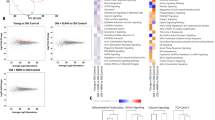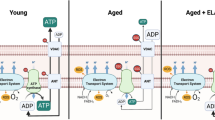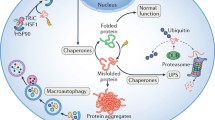Abstract
It has been demonstrated that elamipretide (SS-31) rescues age-related functional deficits in the heart but the full set of mechanisms behind this have yet to be determined. We investigated the hypothesis that elamipretide influences post-translational modifications to heart proteins. The S-glutathionylation and phosphorylation proteomes of mouse hearts were analyzed using shotgun proteomics to assess the effects of aging on these post-translational modifications and the ability of the mitochondria-targeted drug elamipretide to reverse age-related changes. Aging led to an increase in oxidation of protein thiols demonstrated by increased S-glutathionylation of cysteine residues on proteins from Old (24 months old at the start of the study) mouse hearts compared to Young (5–6 months old). This shift in the oxidation state of the proteome was almost completely reversed by 8 weeks of treatment with elamipretide. Many of the significant changes that occurred were in proteins involved in mitochondrial or cardiac function. We also found changes in the mouse heart phosphoproteome that were associated with age, some of which were partially restored with elamipretide treatment. Parallel reaction monitoring of a subset of phosphorylation sites revealed that the unmodified peptide reporting for Myot S231 increased with age, but not its phosphorylated form and that both phosphorylated and unphosphorylated forms of the peptide covering cMyBP-C S307 increased, but that elamipretide treatment did not affect these changes. These results suggest that changes to thiol redox state and phosphorylation status are two ways in which age may affect mouse heart function, which can be restored by treatment with elamipretide.




Similar content being viewed by others
References
Morimoto RI, Cuervo AM. Proteostasis and the aging proteome in health and disease. J Gerontol. 2014;69(Suppl 1):S33-8. https://doi.org/10.1093/gerona/glu049.
Santos AL, Lindner AB. Protein posttranslational modifications: roles in aging and age-related disease. Oxid Med Cell Longev. 2017;2017:5716409. https://doi.org/10.1155/2017/5716409.
Walther DM, Kasturi P, Zheng M, Pinkert S, Vecchi G, Ciryam P, et al. Widespread Proteome Remodeling and Aggregation in Aging C. elegans. Cell. 2015;161(4):919–32. https://doi.org/10.1016/j.cell.2015.03.032.
Chiao YA, Zhang H, Sweetwyne M, Whitson J, Ting YS, Basisty N, et al. Late-life restoration of mitochondrial function reverses cardiac dysfunction in old mice. Elife. 2020;9:e55513. https://doi.org/10.7554/eLife.55513.
Dai D-F, Chen T, Johnson SC, Szeto H, Rabinovitch PS. Cardiac aging: from molecular mechanisms to significance in human health and disease. Antioxid Redox Signal. 2012;16(12):1492–526. https://doi.org/10.1089/ars.2011.4179.
Heron M, Anderson RN. Changes in the leading cause of death: recent patterns in heart disease and cancer mortality. NCHS Data Brief. 2016;254:1–8.
Kuka S, Tatarkova Z, Racay P, Lehotsky J, Dobrota D, Kaplan P. Effect of aging on formation of reactive oxygen species by mitochondria of rat heart. Gen Physiol Biophys. 2014;32(03):415–20. https://doi.org/10.4149/gpb_2013049.
Grek CL, Zhang J, Manevich Y, Townsend DM, Tew KD. Causes and consequences of cysteine s-glutathionylation. J Biol Chem. 2013;288(37):26497–504. https://doi.org/10.1074/jbc.R113.461368 (American Society for Biochemistry and Molecular Biology).
Whitson JA, Bitto A, Zhang H, Sweetwyne MT, Coig R, Bhayana S, Shankland EG, Wang L, Bammler TK, Mills KF, Imai S, Conley KE, Marcinek DJ, Rabinovitch PS. SS-31 and NMN: two paths to improve metabolism and function in aged hearts. Aging Cell. 2020;19:e13213. https://doi.org/10.1111/acel.13213.
Campbell MD, Duan J, Samuelson AT, Gaffrey MJ, Merrihew GE, Egertson JD, Wang L, Bammler TK, Moore RJ, White CC, Kavanagh TJ, Voss JG, Szeto HH, Rabinovitch PS, MacCoss MJ, Qian WJ, Marcinek DJ. Improving mitochondrial function with SS-31 reverses age-related redox stress and improves exercise tolerance in aged mice. Free Radical Biol Med. 2019;134:268–81. https://doi.org/10.1016/j.freeradbiomed.2018.12.031.
Chavez JD, Tang X, Campbell MD, Reyes G, Kramer PA, Stuppard R, Keller A, Marcinek DJ, Bruce JE. Mitochondrial protein interaction landscape of SS-31. BioRxiv. 2019;31: 739128. https://doi.org/10.1101/739128.
Mitchell W, Ng EA, Tamucci JD, Boyd KJ, Sathappa M, Coscia A, Pan M, Han X, Eddy NA, May ER, Szeto HH, Alder NN. The mitochondria-targeted peptide SS-31 binds lipid bilayers and modulates surface electrostatics as a key component of its mechanism of action. J Biol Chem. 2020;295(21):7452–69. https://doi.org/10.1074/jbc.RA119.012094.
Zhang H, Alder NN, Wang W, Szeto H, Marcinek DJ, Rabinovitch PS. Reduction of elevated proton leak rejuvenates mitochondria in the aged cardiomyocyte. Elife. 2020;9:1–18. https://doi.org/10.7554/ELIFE.60827.
Vizcaíno JA, Csordas A, Del-Toro N, Dianes JA, Griss J, Lavidas I, Mayer G, Perez-Riverol Y, Reisinger F, Ternent T, Xu QW, Wang R, Hermjakob H. 2016 update of the PRIDE database and its related tools. Nucleic Acids Res. 2016;44(D1):D447–56. https://doi.org/10.1093/nar/gkv1145.
Sohal RS, Orr WC. The redox stress hypothesis of aging. Free Radical Biology and Medicine. 2012;52(3):539–55. https://doi.org/10.1016/j.freeradbiomed.2011.10.445.
Loescher CM, Breitkreuz M, Li Y, Nickel A, Unger A, Dietl A, Schmidt A, Mohamed BA, Kötter S, Schmitt JP, Krüger M, Krüger M, Toischer K, Maack C, Leichert LI, Hamdani N, Linke WA. Regulation of titin-based cardiac stiffness by unfolded domain oxidation (UnDOx). Proc Natl Acad Sci USA. 2020;117(39):24545–56. https://doi.org/10.1073/pnas.2004900117.
Eng JK, Jahan TA, Hoopmann MR. Comet: an open-source MS/MS sequence database search tool. Proteomics. 2013;13(1):22–4. https://doi.org/10.1002/pmic.201200439.
Nesvizhskii AI, Keller A, Kolker E, Aebersold R. A statistical model for identifying proteins by tandem mass spectrometry. Anal Chem. 2003;75(17):4646–58. https://doi.org/10.1021/ac0341261.
Käll L, Canterbury JD, Weston J, Noble WS, MacCoss MJ. Semi-supervised learning for peptide identification from shotgun proteomics datasets. Nat Methods. 2007;4(11):923–5. https://doi.org/10.1038/nmeth1113.
Beausoleil SA, Villén J, Gerber SA, Rush J, Gygi SP. A probability-based approach for high-throughput protein phosphorylation analysis and site localization. Nat Biotechnol. 2006;24(10):1285–92. https://doi.org/10.1038/nbt1240.
Tyanova S, Temu T, Sinitcyn P, Carlson A, Hein MY, Geiger T, Mann M, Cox J. The Perseus computational platform for comprehensive analysis of (prote)omics data. Nature Methods. 2016;13(9):731–40. https://doi.org/10.1038/nmeth.3901.
Kramer PA, Duan J, Gaffrey MJ, Shukla AK, Wang L, Bammler TK, Qian WJ, Marcinek DJ. Fatiguing contractions increase protein S-glutathionylation occupancy in mouse skeletal muscle. Redox Biol. 2018;17:367–76. https://doi.org/10.1016/j.redox.2018.05.011.
White CC, Krejsa CJ, Eaton DL, Kavanagh TJ. HPLC-based assays for enzymes of glutathione biosynthesis. Curr Prot Toxicol. 1999;1(1):6.5.1-6.5.14. https://doi.org/10.1002/0471140856.tx0605s00.
Acknowledgements
The thiol redox proteomics experiments described herein were performed in the Environmental Molecular Sciences Laboratory, Pacific Northwest National Laboratory, a national scientific user facility sponsored by the Department of Energy under Contract DE-AC05-76RL0 1830. Elamipretide was provided by Stealth Therapeutics (Newton, MA) free of charge. Stealth Therapeutics did not play any role in the experimental design, data collection, or authorship of this research.
Funding
Funding for this research was provided by the UW Genetic Approaches to Aging Training Grant (T32AG000057-40), NIH/NIA grant P01AG001751, NIH/NIEHS grant P30ES007033, and the UW Nathan Shock Center.
Author information
Authors and Affiliations
Corresponding author
Additional information
Publisher's note
Springer Nature remains neutral with regard to jurisdictional claims in published maps and institutional affiliations.
Electronic supplementary material
Below is the link to the electronic supplementary material.
Supplementary file4
(XLSX 16.7 KB)
Supplementary file5
(PDF 419 KB)
About this article
Cite this article
Whitson, J., Martín-Pérez, M., Zhang, T. et al. Elamipretide (SS-31) treatment attenuates age-associated post-translational modifications of heart proteins. GeroScience 43, 2395–2412 (2021). https://doi.org/10.1007/s11357-021-00447-6
Received:
Accepted:
Published:
Issue Date:
DOI: https://doi.org/10.1007/s11357-021-00447-6




